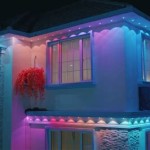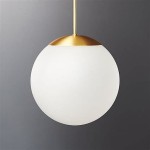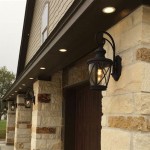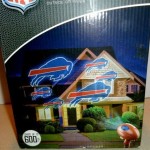Outdoor Lighting Design in Scottsdale: Enhancing Functionality and Aesthetics
Scottsdale, Arizona, with its unique desert landscape and vibrant outdoor lifestyle, presents specific challenges and opportunities for outdoor lighting design. Effective outdoor lighting extends living spaces, improves safety and security, and accentuates architectural features, all while minimizing light pollution and energy consumption. A carefully considered lighting plan is crucial for transforming outdoor areas into inviting and functional environments.
This article delves into the key principles and considerations involved in comprehensive outdoor lighting design specifically tailored for the Scottsdale environment. Factors such as local regulations, climate-appropriate materials, and specific lighting techniques will be examined to provide a thorough understanding of the process.
Understanding the Principles of Outdoor Lighting Design
Effective outdoor lighting goes beyond simply illuminating a space. It involves a strategic approach incorporating several fundamental principles. These principles guide the placement, intensity, and color temperature of light fixtures to achieve optimal results.
Layering Light: Layering involves using different types of light to create depth and visual interest. This technique combines ambient lighting (general illumination), task lighting (focused light for specific activities), and accent lighting (highlighting architectural features or landscaping). Ambient lighting might be achieved through strategically placed path lights or subtle uplighting on trees. Task lighting could involve brighter lights focused on outdoor cooking areas or seating arrangements. Accent lighting could be used to emphasize a unique sculpture or an attractive rock formation.
Creating Focal Points: Directing attention to key features of the landscape or architecture is another critical aspect. Focal points can be established by using brighter or more colorful light to draw the eye. For example, a dramatic entranceway can be emphasized with strategically placed spotlights, or a water feature can be highlighted with underwater lighting. The key is to choose focal points that complement the overall design and enhance the visual appeal of the property.
Controlling Glare and Light Trespass: Minimizing glare and preventing light from spilling onto neighboring properties are essential considerations. Proper shielding and aiming of light fixtures play a crucial role in reducing glare. Using fixtures with downward-facing optics and adjustable shields can help direct light where it is needed and prevent it from shining upwards or outwards. Compliance with local regulations regarding light pollution is also vital.
Selecting Appropriate Color Temperature: The color temperature of light, measured in Kelvin (K), significantly impacts the ambiance of outdoor spaces. Warmer color temperatures (2700K - 3000K) create a cozy and inviting atmosphere, while cooler color temperatures (4000K and above) provide brighter and more energetic illumination. For residential outdoor lighting in Scottsdale, warmer color temperatures are generally preferred to complement the natural landscape and create a relaxed environment. Cooler temperatures might be used in specific areas like security lighting or task lighting where greater visibility is required.
Addressing the Scottsdale Climate and Environment
The Scottsdale climate presents unique challenges for outdoor lighting design. The intense heat, dry conditions, and exposure to sunlight require careful consideration of materials and fixture placement. Furthermore, the desert environment necessitates a focus on minimizing light pollution to preserve the night sky.
Selecting Durable and Weather-Resistant Materials: Outdoor lighting fixtures in Scottsdale must be able to withstand extreme temperatures, intense sunlight, and occasional monsoonal rains. Materials such as powder-coated aluminum, stainless steel, and brass are popular choices due to their durability and resistance to corrosion. Fixtures should also be rated for outdoor use (UL listed) to ensure they are safe and reliable in the Scottsdale environment.
Considering Energy Efficiency and Sustainability: In the desert climate, conserving energy is paramount. LED lighting is the preferred choice for outdoor applications due to its energy efficiency, long lifespan, and ability to produce a wide range of color temperatures. Solar-powered lighting options are also becoming increasingly popular, offering a sustainable and cost-effective way to illuminate pathways, gardens, and other outdoor areas. When selecting fixtures, it is important to consider their energy efficiency rating (e.g., Energy Star) and their impact on overall energy consumption.
Minimizing Light Pollution: Scottsdale has regulations in place to minimize light pollution and protect the night sky. Outdoor lighting should be designed to comply with these regulations, which typically specify limits on the amount of light that can be emitted and the direction in which it can be directed. Using shielded fixtures, minimizing upward-facing light, and avoiding excessive brightness are all important strategies for reducing light pollution. Motion sensors can also be used to activate lights only when needed, further reducing energy consumption and light trespass.
Plant Considerations and Lighting: The desert landscape of Scottsdale includes unique plant life. Outdoor lighting designs should consider the impact of lighting on plant health. Avoid direct, intense light on sensitive plants, and position lights in a way that minimizes disruption to their natural growth patterns. Uplighting trees can be an effective way to showcase their unique form without harming the plants themselves.
Specific Lighting Techniques for Scottsdale Properties
Beyond the general principles, several specific lighting techniques are particularly well-suited for Scottsdale properties. These techniques can enhance the aesthetic appeal of the landscape, improve safety and security, and create a welcoming outdoor environment.
Path Lighting: Path lighting is essential for safety and navigation, especially in areas with uneven terrain or steps. Path lights should provide sufficient illumination to guide pedestrians without creating excessive glare. Low-level path lights with shielded optics are a good choice for minimizing light pollution and creating a soft, ambient glow. Ensure that path lighting is evenly spaced and appropriately sized for the width of the pathway.
Uplighting and Downlighting: Uplighting involves placing light fixtures at the base of trees, walls, or other architectural features to illuminate them from below. This technique can create a dramatic effect and highlight the texture and form of these elements. Downlighting, on the other hand, involves placing light fixtures above to illuminate the ground below. Downlighting can be used to create pools of light on patios, decks, or other outdoor living areas. Careful consideration of fixture placement and beam angle is crucial for achieving the desired effect without creating glare or light trespass.
Security Lighting: Security lighting is designed to deter intruders and improve safety around the property. Motion-activated lights are a popular choice for security lighting, as they only turn on when movement is detected. These lights should be strategically placed to illuminate entrances, walkways, and other vulnerable areas. The color temperature of security lighting should be chosen to provide clear visibility without being overly harsh or disruptive to neighbors. Amber LEDs are becoming increasingly popular as security lighting due to their lower impact on nocturnal wildlife.
Pool and Water Feature Lighting: Pools and water features can be transformed into stunning focal points with the addition of underwater lighting. LED underwater lights are energy-efficient and available in a wide range of colors and brightness levels. When lighting pools, it is important to use fixtures that are specifically designed for underwater use and are properly grounded for safety. Waterfalls and fountains can also be effectively illuminated with strategically placed spotlights or submersible lights.
Architectural Lighting: Highlighting the architectural details of the house can significantly enhance its curb appeal. This can be achieved by using uplighting to accentuate columns, gables, or other prominent features. Wall-mounted sconces can also be used to add visual interest and provide ambient lighting around doors and windows. Consider the style of the house when selecting architectural lighting fixtures to ensure they complement the overall design.
Outdoor Living Area Lighting: Patios, decks, and outdoor kitchens require specific lighting solutions to create a comfortable and functional space. String lights can be used to create a festive and inviting atmosphere, while recessed lighting can provide more targeted illumination for cooking or dining areas. Consider adding dimmers to control the intensity of the lighting and create different moods for various occasions. Fire pits and fireplaces can also serve as focal points and provide warmth and ambiance.
Smart Lighting Systems: Automated smart lighting systems provide advanced control and customization capabilities. These systems allow users to control lighting from their smartphones or tablets, set schedules, and create custom lighting scenes. Smart lighting can also integrate with other smart home devices, such as security systems and thermostats. This advanced technology delivers energy savings and allows homeowners to adapt their outdoor environment quickly based on need or aesthetic desire.

How To Choose The Best Outdoor Lighting For A Backyard Retreat Think Green Design Build Landscape

Phoenix Scottsdale Outdoor Lighting Paradise Valley Landscape Lights

Scottsdale Phoenix Az Landscape Outdoor Lighting Let There Be Light

Let There Be Light Desert Landscape Lighting Ideas Designs

Landscape Lighting Outdoor Scottsdale Phoenix Envirogreen Design Build

Podcast Lighting Design Think Green Build Landscape

Arizona S Leader In Landscape Lighting North Star Outdoor

Landscape Lighting Portfolio Refined Outdoor Llc

Refined Outdoor Lighting 227 Photos 23 Reviews 2642 E Cloud Rd Cave Creek Arizona Fixtures Equipment Phone Number Yelp

Scottsdale Phoenix Az Landscape Outdoor Lighting Let There Be Light
Related Posts







